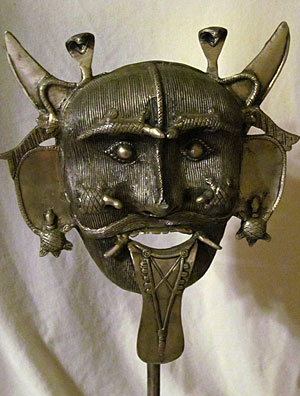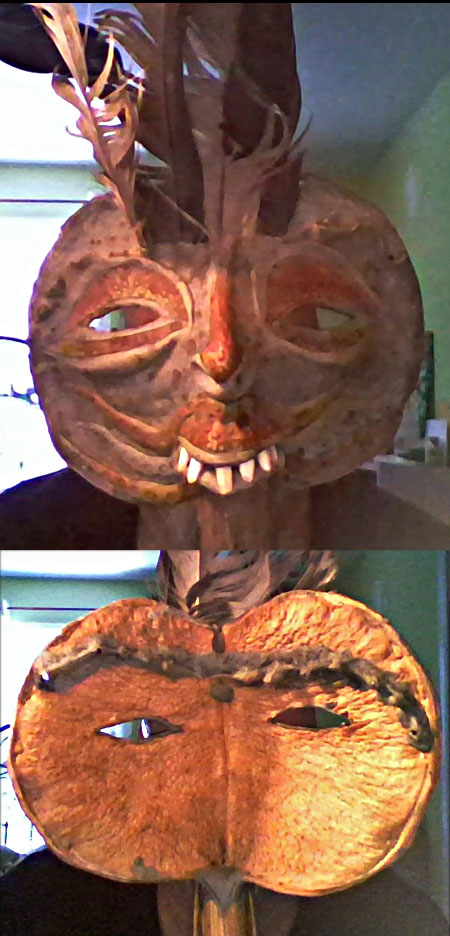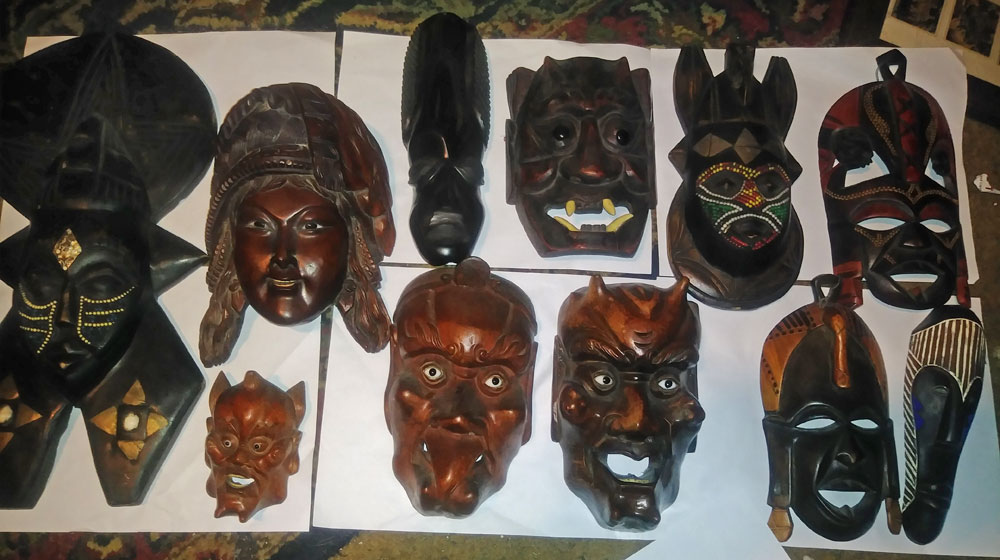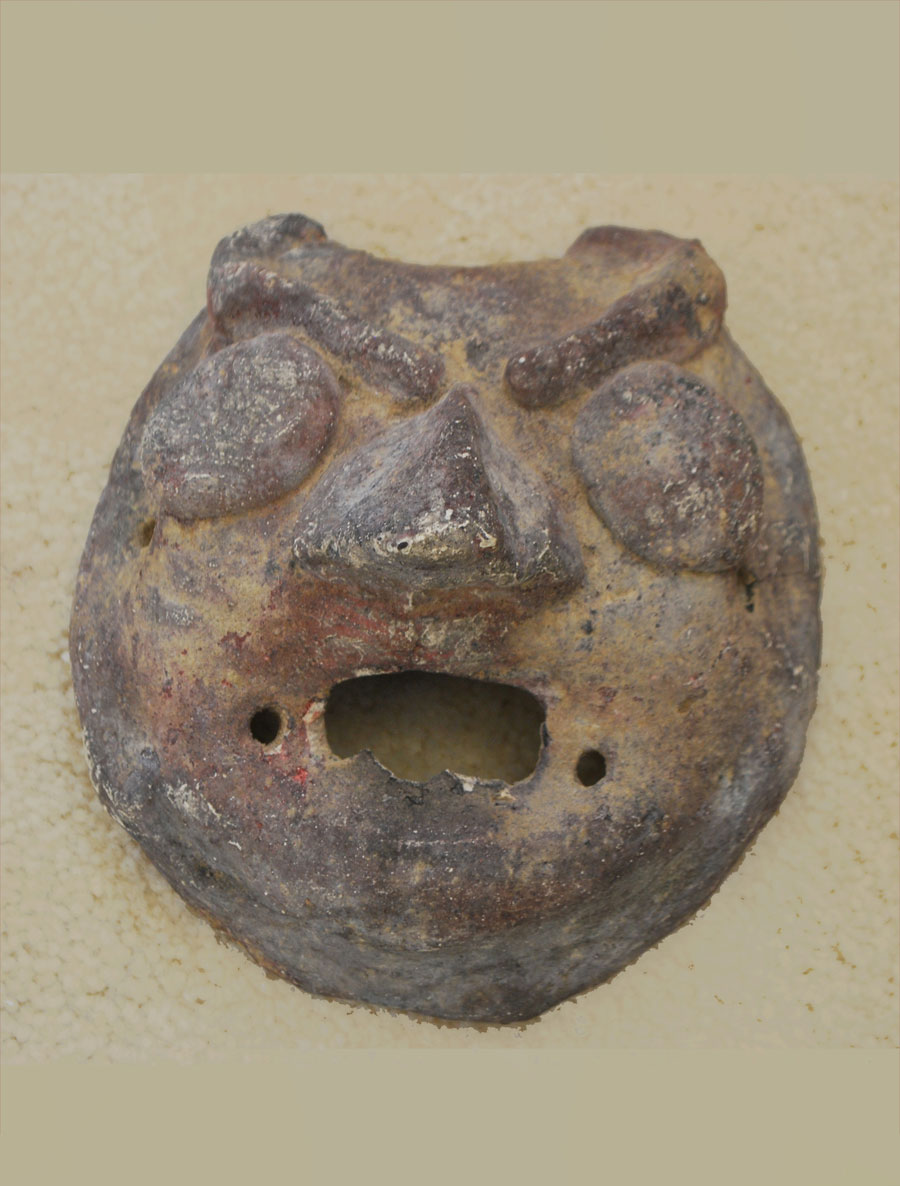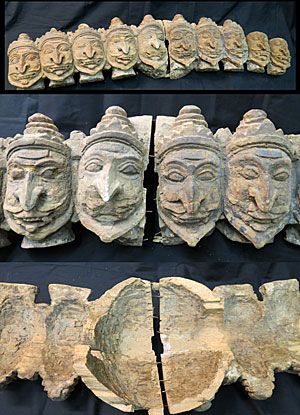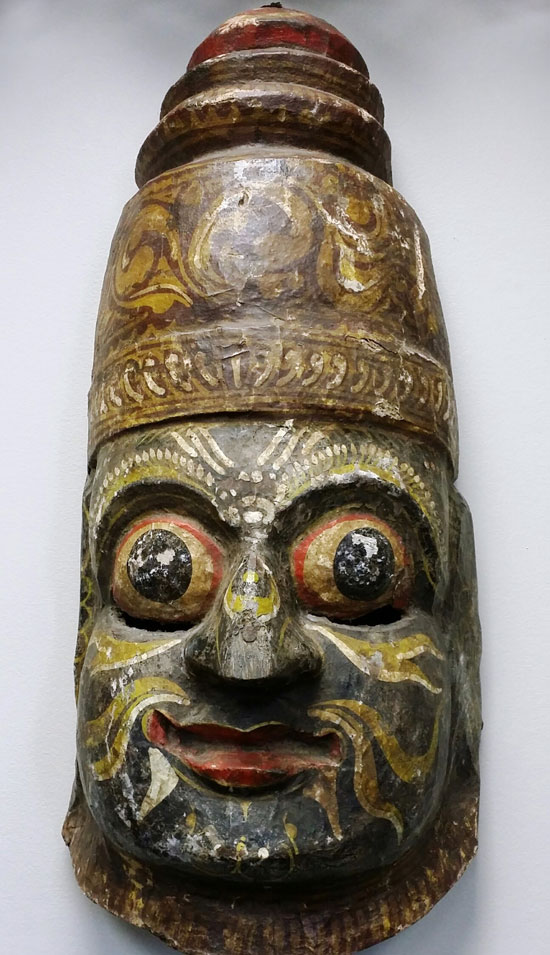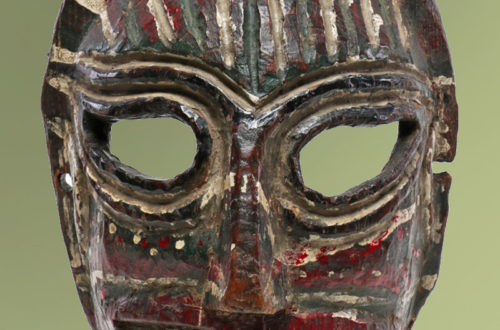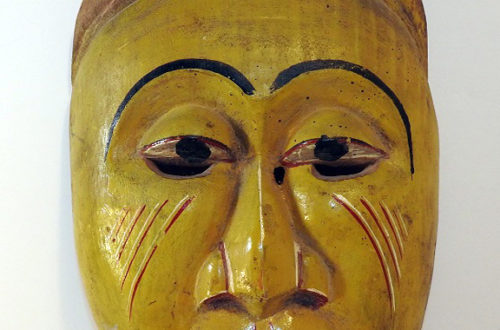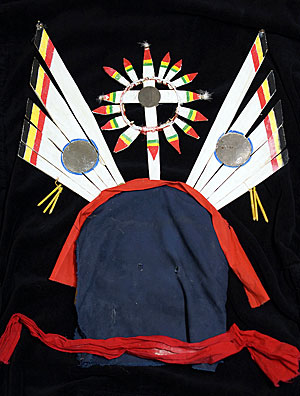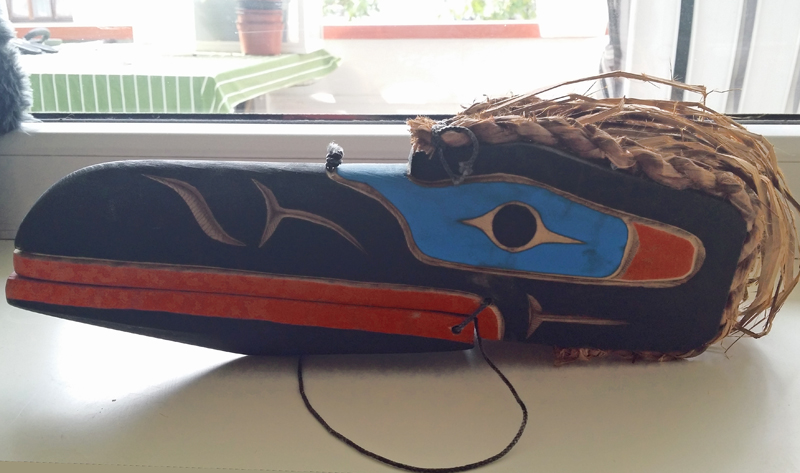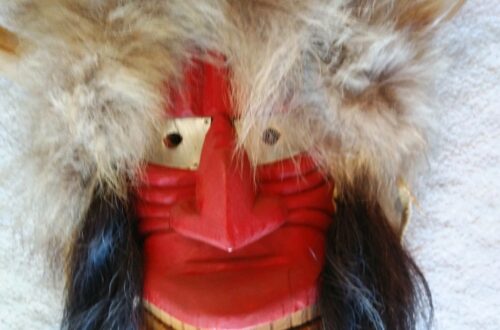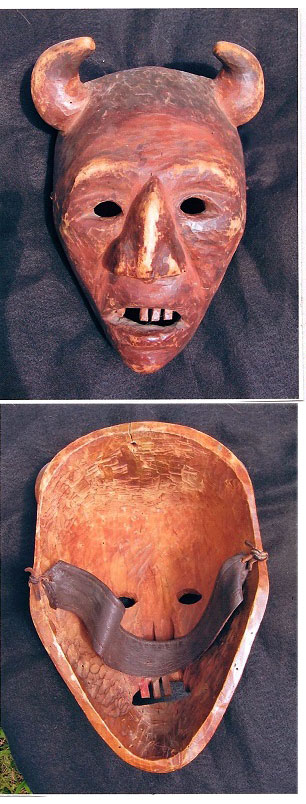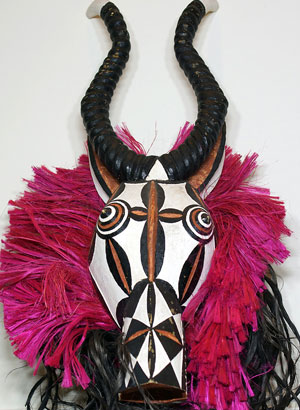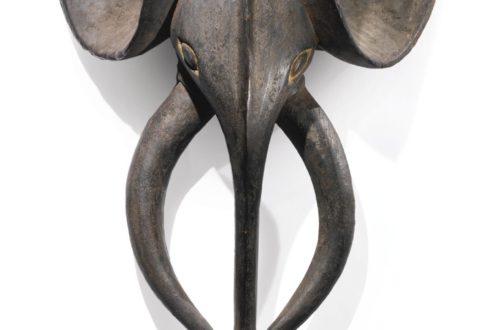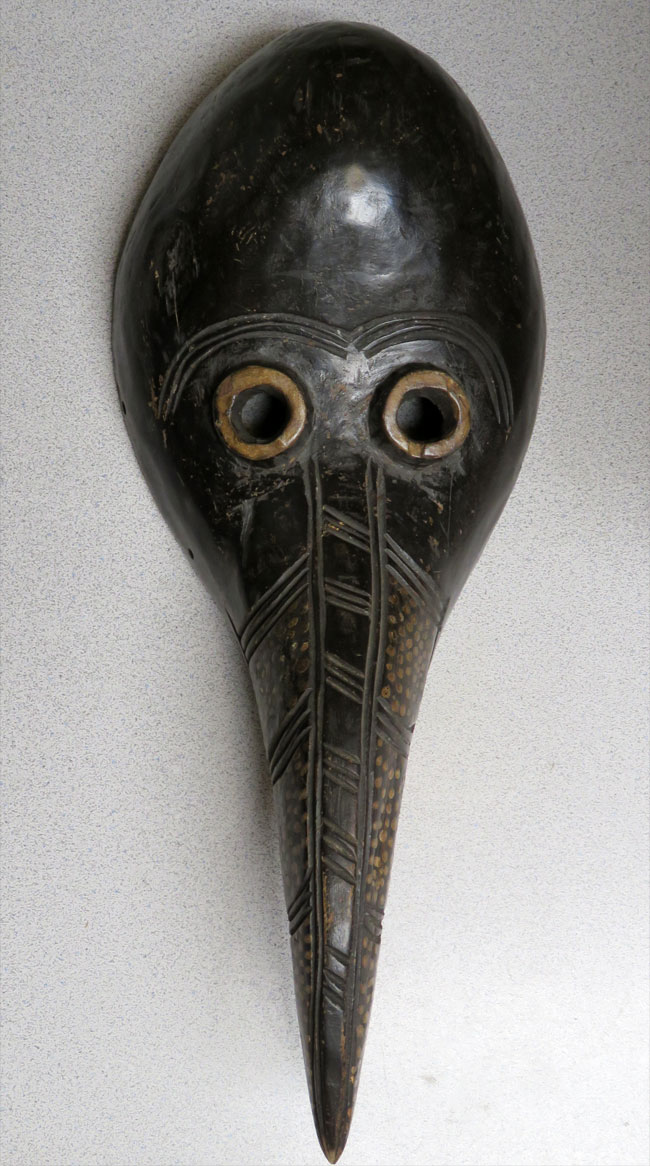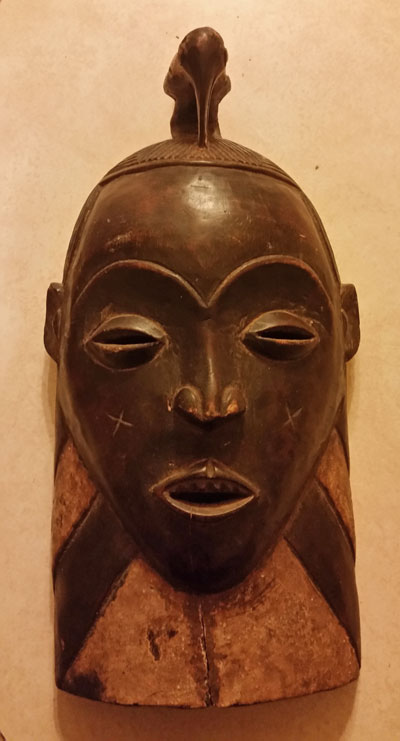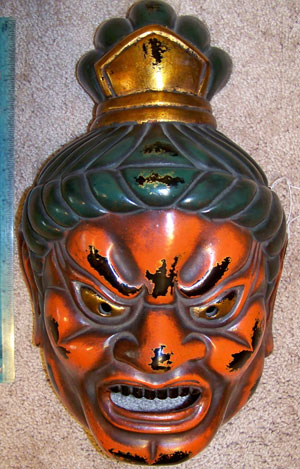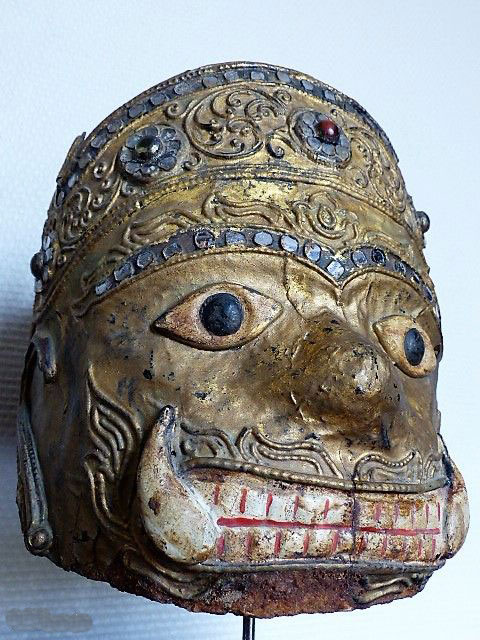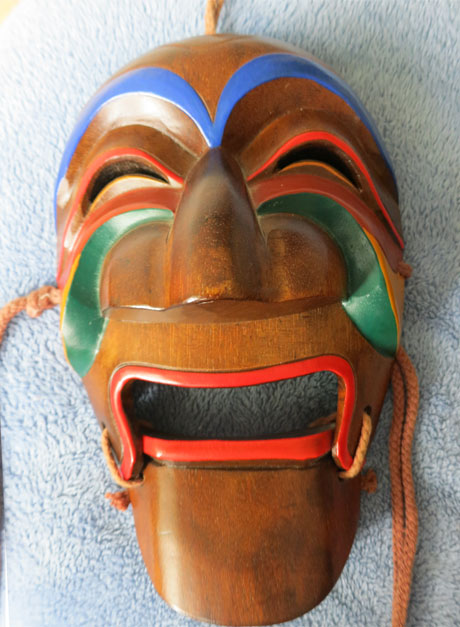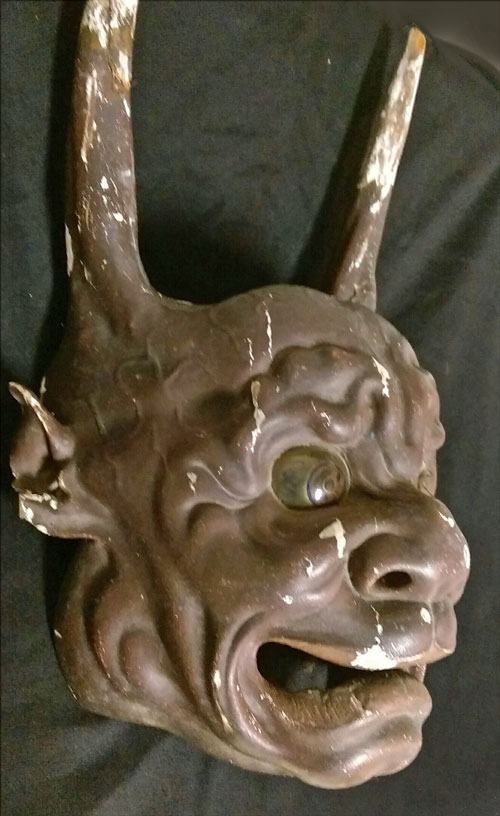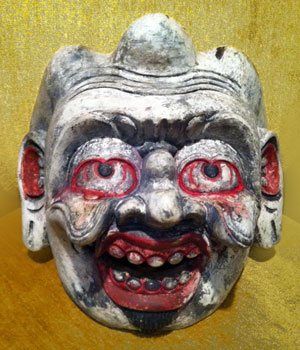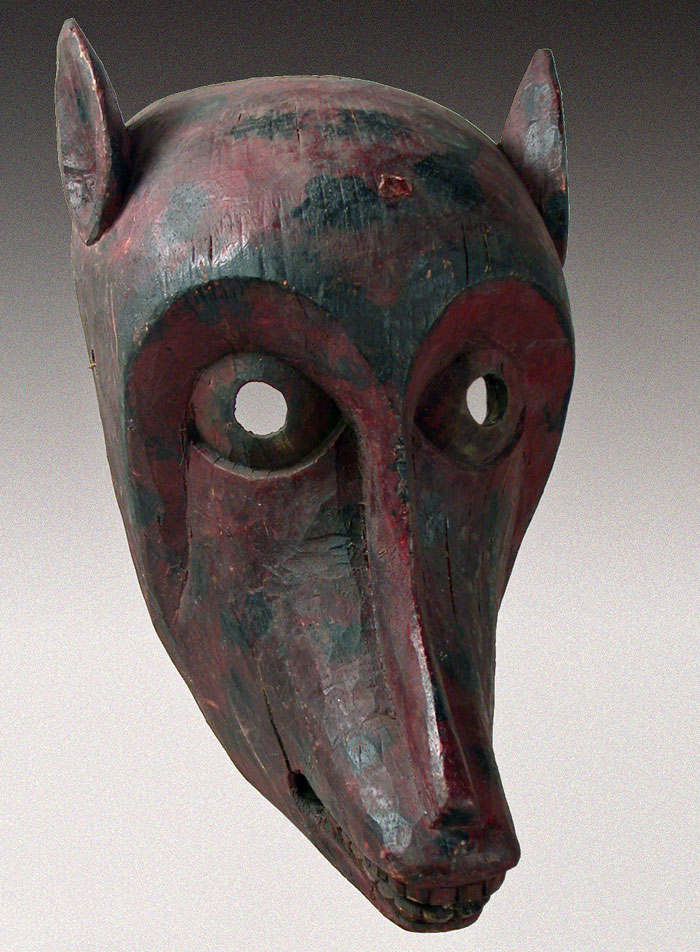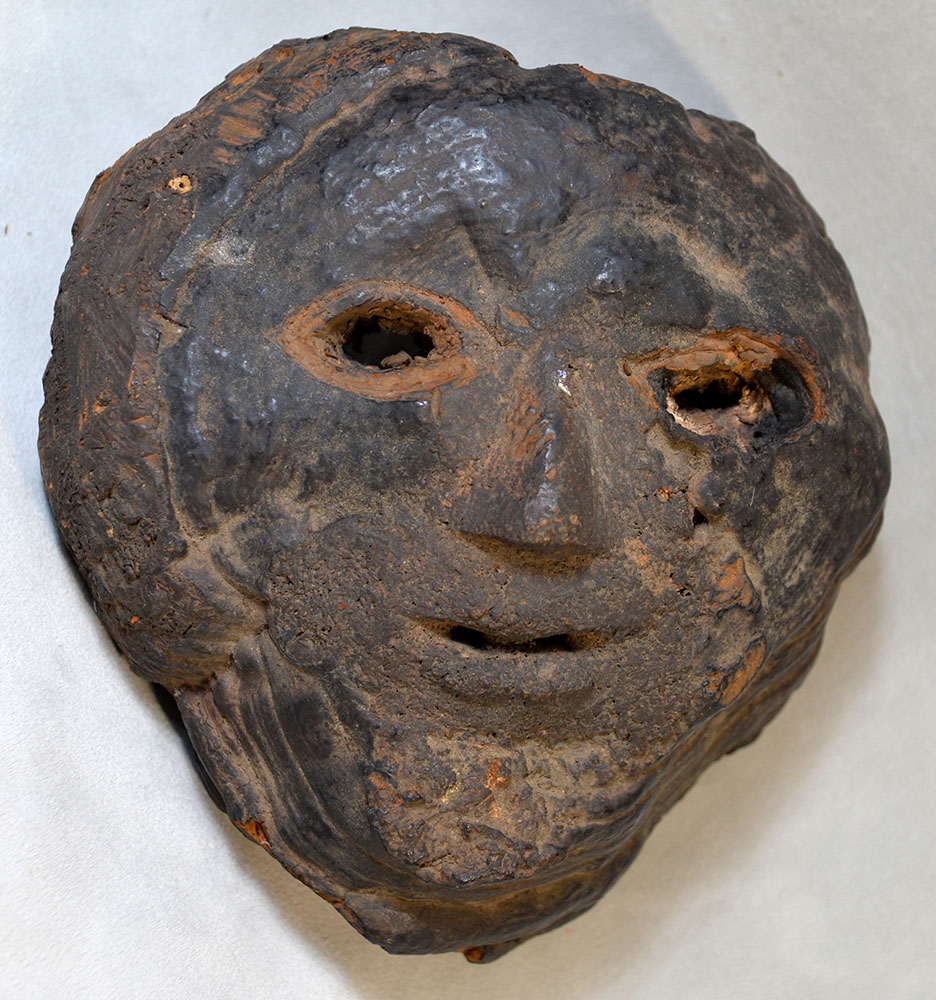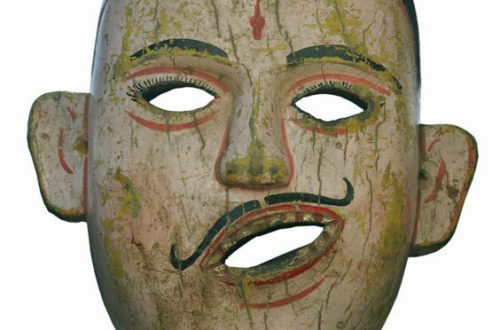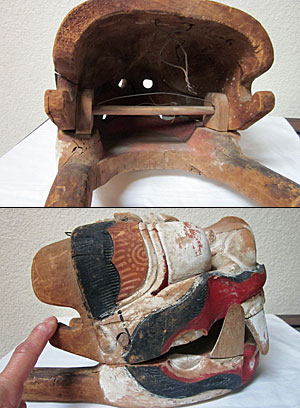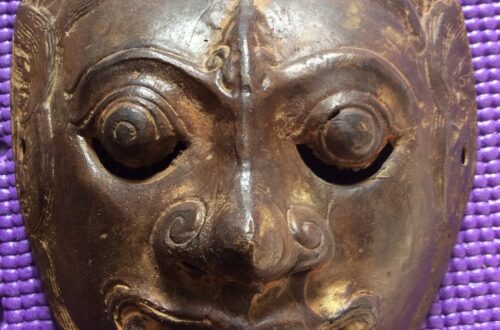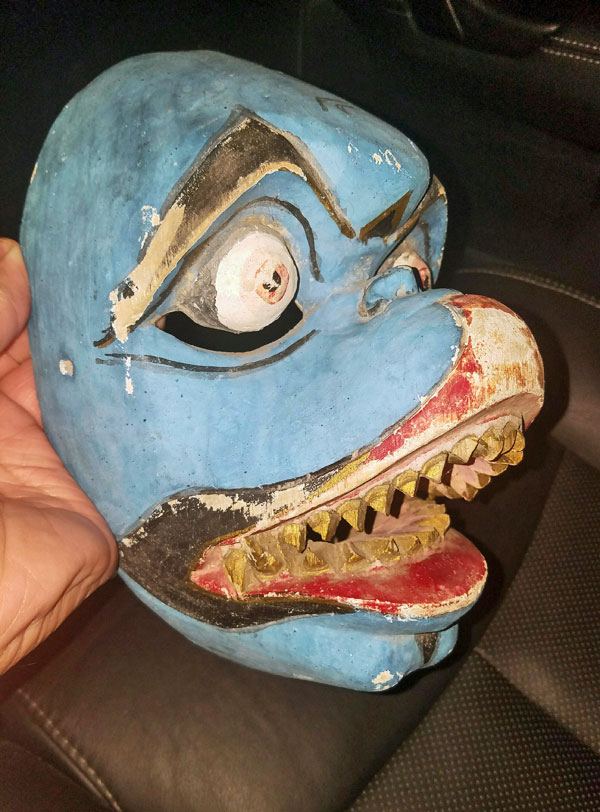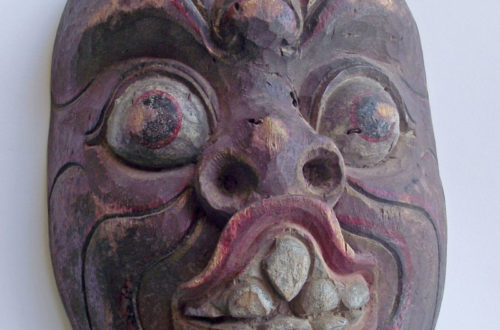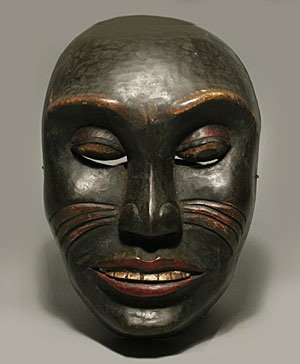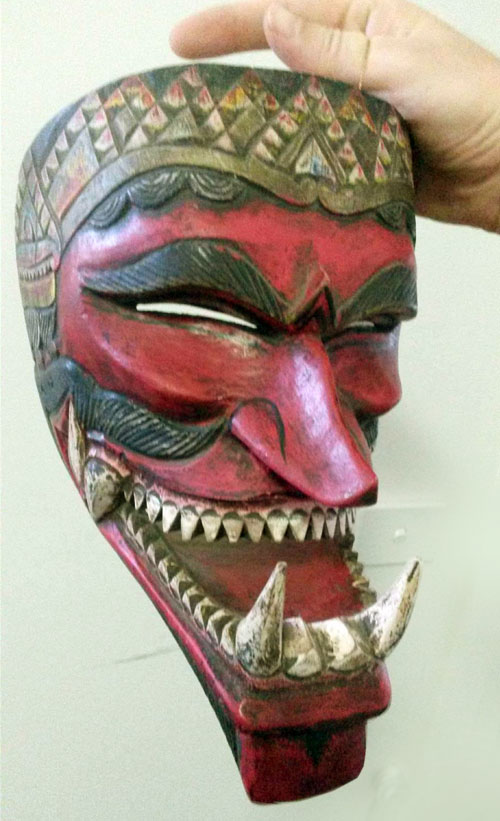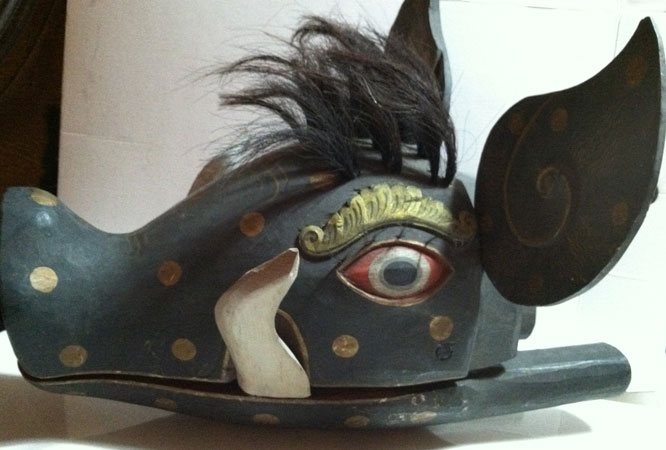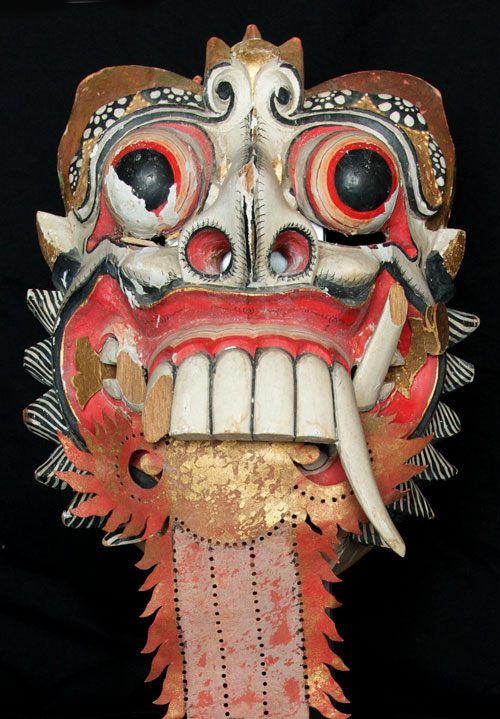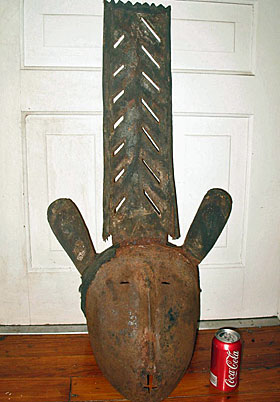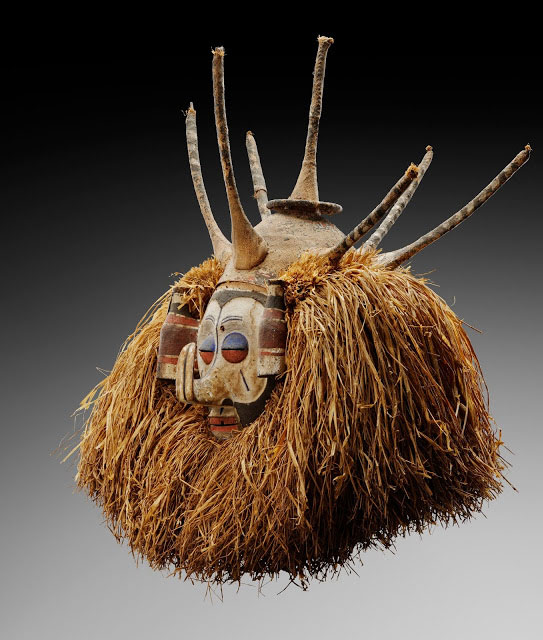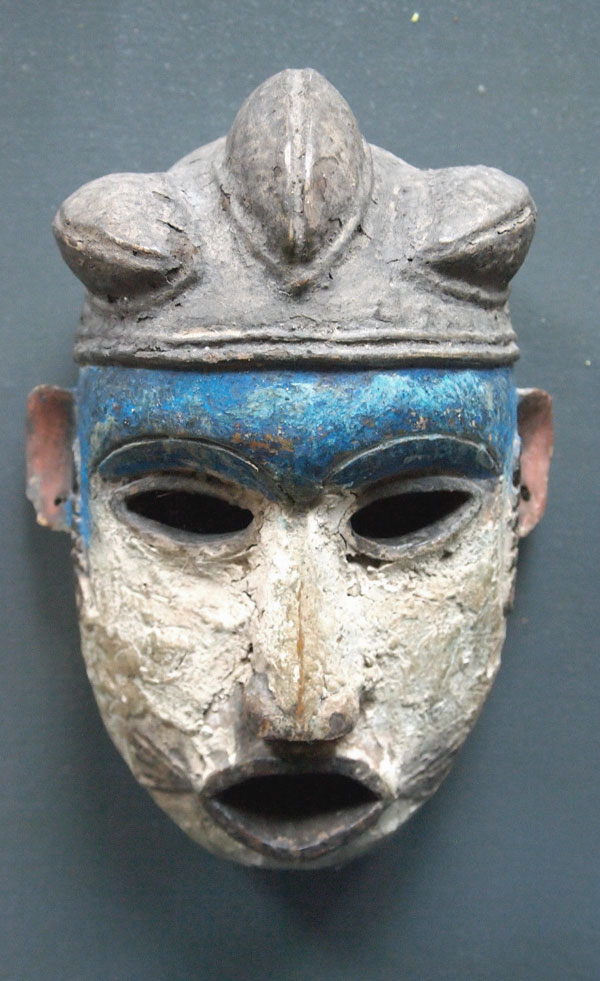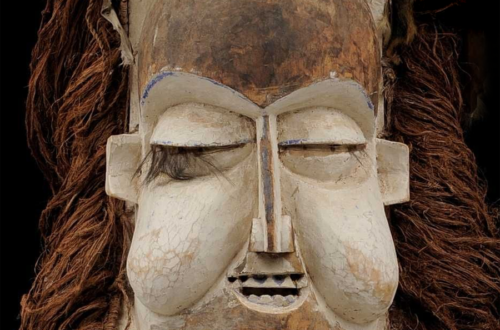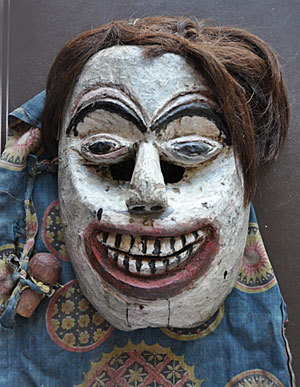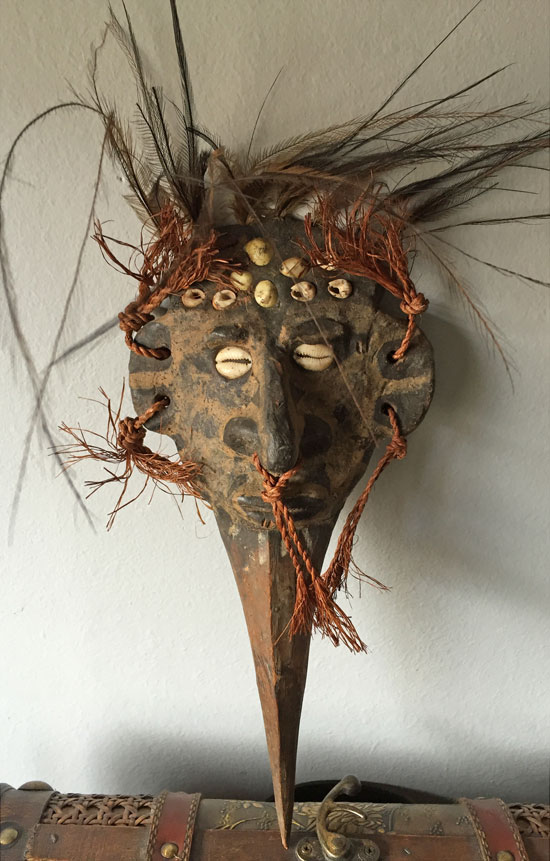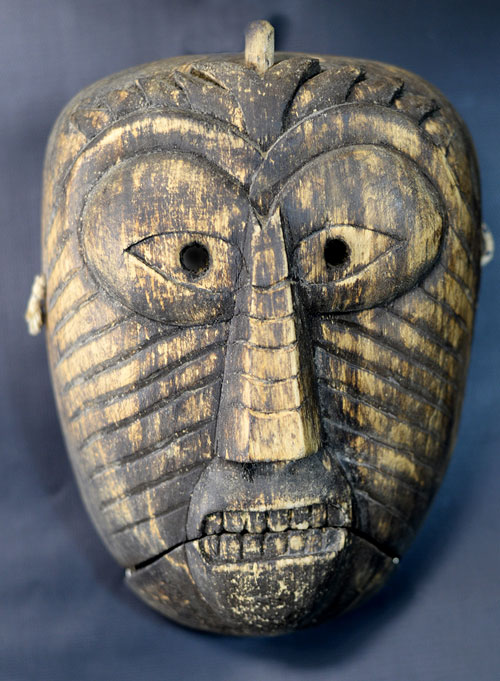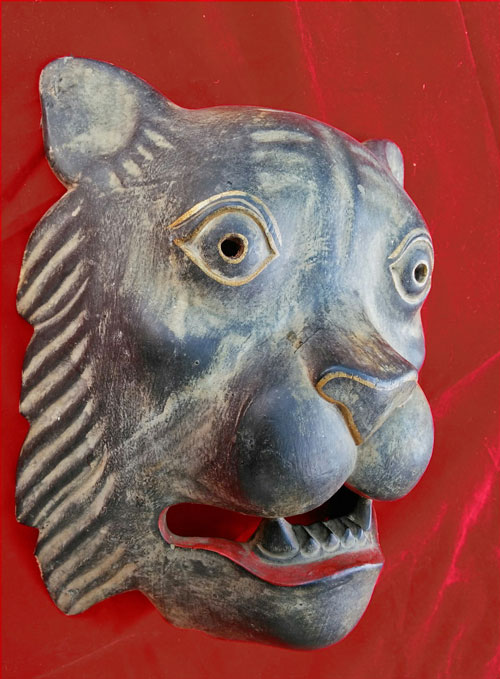Q: I think this is bronze. Can’t find it anywhere on the net. The Cobras on the forehead and the turtles on the ears caught our attention as well as the symbols on the base. Jim, 9-11-13 A: It is a very appealing bronze sculpture. From where, I do not know.
-
-
Famous 10-headed King Ravana
Q: This is a Ravana mask that I have been trying to find more info on. I believe it could be pre-1800. I bought it from a good dealer friend who thinks the same age. 45 inches wide, it was cut in half at some point. I really enjoy this great mask. Josh, 545 A: There is a cheap plastic version of this famous mask on this site. It says “This ten-headed mask represents the Asura (Sanskrit for demon) king Ravana, from the Hindu epic Ramayana.
-
I’ve never seen an Apache Ga’an
Q: This is a Ga’an (mountain spirit) mask used in the 1970s and 1980s, probably by the Western Apache, Diné, or Chiricahua peoples. It was acquired from the tribe by a Hollywood studio for use in shooting the movie “Geronimo” (1993), and I bought it from someone who used to work for the studio and was given it as a present. It appears it once had feathers attached to the tips of the wood. Incidentally, the first Geronimo movie (1952) also had Ga’an dancers in it. Aaron, 543 A: I normally post only one mask per person,
-
Why are real African masks so hard to find?
Q: I bought this Gurunsi antelope mask from a dealer in Ougudougou. It was in perfect condition and the price was fair. Aaron, 542 A: Once again I’m impressed by your ability to pick out excellent additions to a wonderful mask collection. This one is a perfect example of what the Gurunsi people of southern Burkina Faso would actually use in a ritual dance.
-
Japanese repros are desirable
Q: I picked up 8 of these Masks at a estate sale. Would like to know what you think of them. All are signed but one. I do not know ofwhat material they are made. 9 x 7 inches, there seems to be some wear on nearly all of them. Pete, 541 A: All 8 of your Japanese masks were made at the same work shop.
-
You got a good deal
Q: Hope this picture is ok! Just want to know the origin of a mask I bought at a flea market for $20. It is wood and very light. Mickey, 540 A: It is from the Himalayan region, perhaps Nepal or Tibet.
-
Scary animal mask from rural Indonesia
Q: Could you tell me about the value and origin of this mask? Susan, 539 A: I decided to show the rear view and side view because you can clearly see how these animal masks are constructed.
-
Black characters show up everywhere
Q: I recently bough this thinking it was African , but it may not be. It looks pretty old though and worn, not a tourist piece. Do you have an idea where it may be from. I collect African things so don’t intend to keep it. Chris, 538 A: I can understand your attraction to this handsome piece.
-
A special iron mask from Mali
Q: Purchased about 15 years ago, this looks nothing like my other African masks. The main construction is of thin iron. There is a woven material around the periphery of the tower-like portion of the mask. Also, a felt-like material on the forehead. There are some signs of white paint on the tower and the ears, plus what may be attachment holes on the rear periphery. I think it may have been wearable. Anne & Sam, 536 A: Lots of handsome iron masks have been coming out of Mali in recent years from both the Dogon and Bamana people.
-
From the remote areas of Indonesia
Q: The seller bought this mask 20 years ago in Bali. But he doesn’t think it comes from there. Someone told him it was from Sulawesi and that it could have been made to celebrate dead people. It’s wood and 8″ x 5″ large with hair, cloth and a wood stopper attached to a cord. Do you have any idea of its true origin and age? Philip, 535 A: Just north of Bali are the much larger islands of Sulawesi and Borneo. Either is a possibility. This appears to be an ethnographic artifact worth learning more about.
